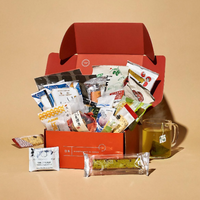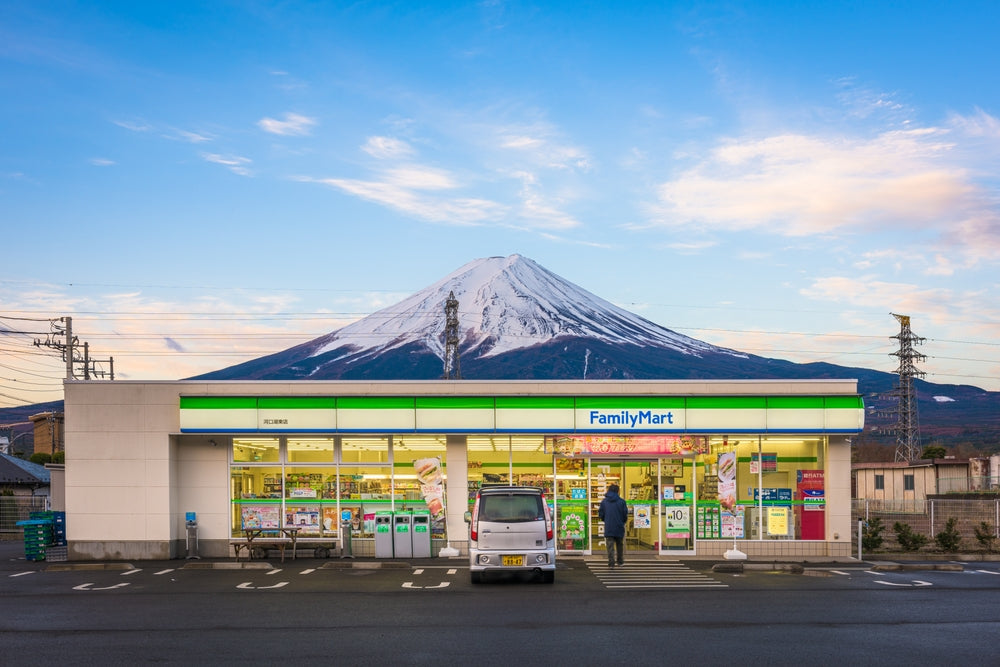What is Dango, and How Do You Make it?
What is Dango?
Dango (団子) is a one of the most iconic wagashi, or Japanese sweets, that could ever exist. Japanese dango are round dumplings made from glutinous rice flour (mochiko) that come on a bamboo skewer. There are usually three to five dango balls on every skewer. They are often coated in red bean paste (anko) or other toppings, such as a sweet soy sauce syrup. Dango are soft and chewy and deserving of their acclaim in the world of Japanese snacks. The best thing about dango is that they’re a perfect portable street snack because of their lollipop-like stick they’re pierced on!
Dango come in a variety of flavors and types. Shoyu dango are soy sauce flavored and baked on a grill. Goma dango has a coating of sesame seeds. Cha dango is flavored with green tea. Tsukimi dango are plain white dango without the skewer that are eaten during the autumn full moon viewing festival (tsukimi). Hanami dango are tri-colored and make their entrance during hanami, or cherry blossom viewing festival. Mitarashi dango is perhaps the most well-known type of dango. The dango balls are grilled then coated with a sweet soy glaze. There are many other types of dango, Sasa dango, Kinako dango, and Otoko dango to name a few, but we don't want to "roll out" too many of these cute balls and overwhelm you.
What is Mochi?
If dango sounds a lot like mochi, you’re not the only one who is confused. How to make mochi and dango is similar, but there are a few differences. While dango is made from mochiko, mochi is made from steamed and pounded rice (mochigome). Mochi are larger, softer, and sometimes filled with anko or ice cream, while dango are smaller, firmer, and usually smothered in sauce rather than filled. Daifuku are another close relative of dango. Daifuku are also made of mochigome rather than mochiko, but it has a thinner skin than mochi. The major feature of daifuku is that it is always filled with anko or other surprises, such as strawberries.
What is the History of Dango?
Like a lot of Japanese candy and confectionery, the original inspiration for dango may go back centuries. It is said that as far back as two thousand years ago, nuts were ground into a fine meal, mixed with rice porridge, and formed into dango balls. Dango can be thought of as a nutritious DIY version of a popsicle made in prehistoric times by hunter-gatherers!
A tea shop in Kyoto named Kamo Mitarashi claims to be the birthplace of the modern dango in the early 1900s. Legend has it that Mitarashi dango were inspired by an emperor’s visit to Kyoto’s Shimagamo Shrine in the 1300s. The emperor reportedly looked down while washing his hands in the purifying water at the entrance of the shrine (known as mitarashi) and saw five bubbles. The five round bubbles translated to Mitarashi dango’s five dumpling balls. Soon, visitors to the nearby Shimagamo Shrine offered Mitarashi dango as a way of honoring the deities and hoping for good luck for the year. A sweet and salty soy sauce brown sugar syrup is the icing on the cake of Mitarashi dango, making it irresistible. So after paying their respects, the shrine visitors surely took those same dango home to gobble up!
Dango have a solid place in present-day Japanese culture and language. Dango sometimes has a negative connotation. In the strategy board game called go, a dango is a useless cluster of stones. Dango also has a positive or pragmatic connotation. A dango hairstyle with a round bun on each side of the head is a popular fashion statement. The idiomatic expression hana yori dango literally means “dango instead of flowers” and figuratively means “choose practical over pretentious.”
How To Make Dango
Making your own dango isn’t a difficult process! Below is a simple, fail-proof matcha dango recipe that yields two servings. A delicious yet economical matcha powder to use in this recipe is Morihan Uji Matcha for Training.

Matcha Dango Recipe:
- In a bowl, mix together c. 2/3 glutinous rice flour (mochiko), 1 tbsp. matcha powder, and 2 tbsp. sugar.
- Add ½ c. of water and knead until well mixed.
- Roll out the dough and form into balls.
- Boil a pot of water.
- Once boiled, drop in dough balls.
- When all dumplings have floated to the surface of the water, turn off stove.
- Let dumplings sit in the warm water for 2-3 minutes.
- Remove dumplings and place into cold water briefly.
- Spear dumplings onto skewers.
- Serve with your topping of choice or eat plain.
Hanami and Mitarashi Dango, The Easy Way!
2 Servings Each (4 Total)
Dango Ingredients:
- 2 ⅔ cups Mochiko (sweet rice flour)
- 1 tsp Matcha powder (feel free to substitute a matcha latte packet in a pinch, though you may want to decrease sugar)
- ½ cup sugar
- 1 cup hot water
- red food coloring
- skewers for serving
Mitarashi Sauce Ingredients:
- 1/4 cup water
- 1 Tbsp soy sauce
- 1 Tbsp mirin
- 1/4 cup sugar
- 1 tsp cornstarch
- 1 additional tsp water
Process:
- Combine mochiko and sugar in a bowl and very gradually add in hot water.
- Mix by hand until the dough feels like an earlobe (yes, an earlobe!) when you squeeze it.
- Divide the dough in half. Set aside one half for Mitarashi dango.
Hanami dango (first half of dough)
- Divide dough in three. Leave the first section as-is.
- Second section: add a small amount of water to your matcha, then knead into dough until it is even in color.
- Third section: add 1-2 drops of red food coloring and knead until the color is even.
- Roll each section into two even balls (six total). Boil for 5-8 minutes or until they rise to the surface.
- Remove and cool slightly, then skewer as seen in the emoji.
Now, for the Mitarashi dango:
- Divide dough into six small balls. Boil for 5-8 minutes or until they rise to the surface.
- Remove and cool slightly. Add three per skewer.
Mitarashi Sauce:
- Mix cornstarch and 1 tsp water. Set aside.
- Mix together water, soy sauce, and sugar in a small saucepan. Bring to a boil over medium heat.
- Pour in the corn starch mix and stir to thoroughly combine.
- Bring to a boil again. Remove from heat.
Finish up!
- Lightly toast the dango in a dry non-stick pan.
- Glaze with Mitarashi sauce and serve immediately. Itadakimasu!
Where to Buy Dango
Not in the mood to cook? We have you covered! You can order dango or dango-mochi hybrids via our Bokksu Japanese snack Boutique. Which dango style are you craving?

By: Megan Taylor Stephens
See some gorgeous dango up close with this video!
Author Bio








































